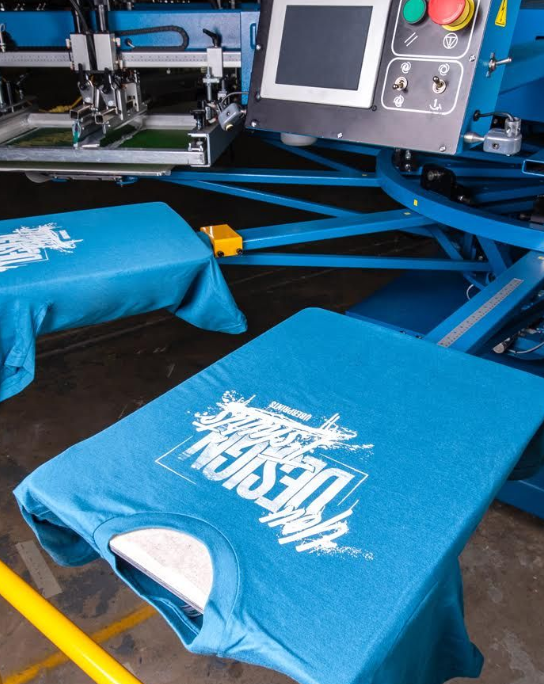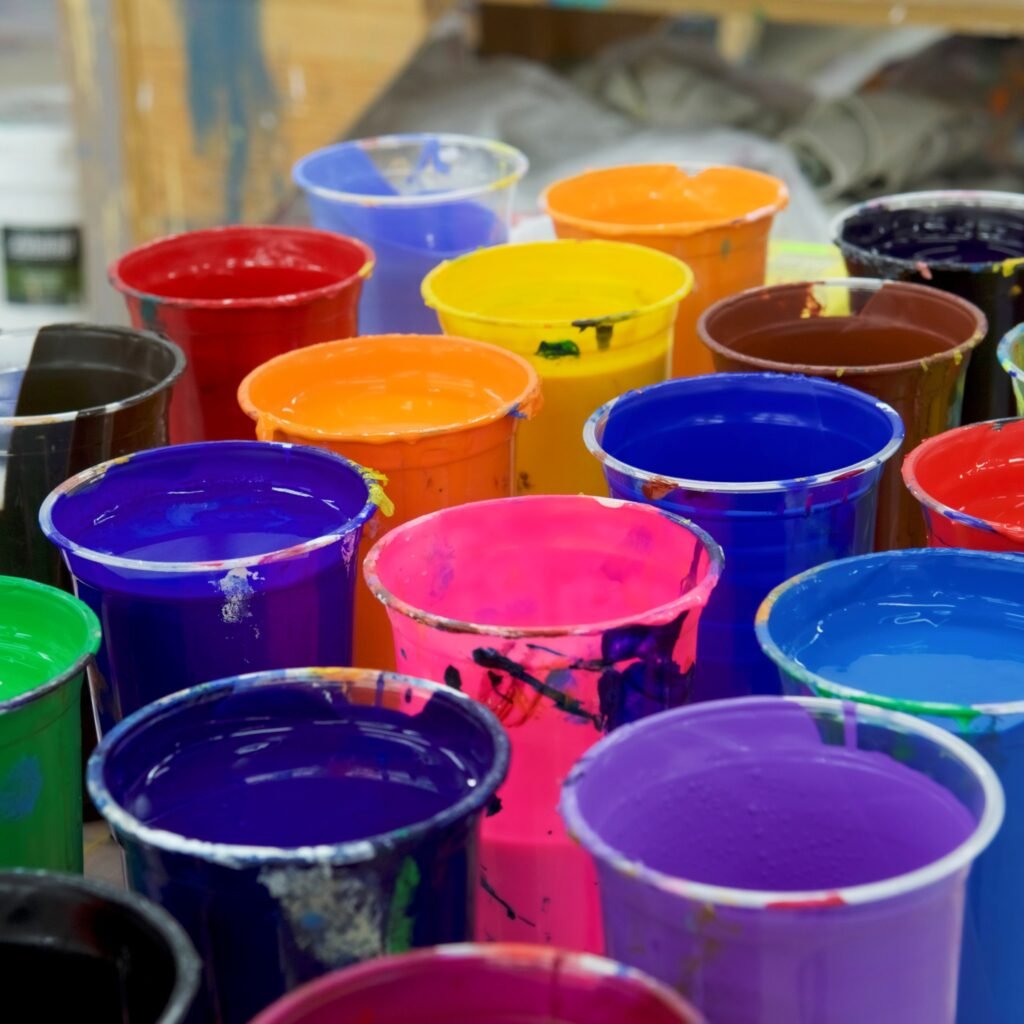Whether you’re a hobbyist designing custom clothing or a expert jogging a thriving print keep, know-how the fine details of display screen printing ink is crucial on your achievement. This article dives deep into the arena of ink for screen print, protecting everything from styles of ink—like plastisol ink and water primarily based—to key considerations such as remedy temperature, cloth compatibility, opacity for dark prints, and the rise of unique effect options. You’ll also discover how brands like screenprinting.Com are empowering nowadays’s display screen printers with pinnacle-tier display screen printing materials. Read on if you want vibrant results, long lasting prints, and understanding that let you increase first-class, keep costs, and wow your clients with every print. This know-how is crucial whether or not you’re vetting inks to be had, evaluating ink costs, or troubleshooting why that plastisol display screen printing process didn’t quite pop.
Mündəricat
1. What Is ekran mürəkkəbi basın?A Foundation for Every Great Print
Every pleasing display print starts with the right ink. Ink in display screen printing is greater than just colour—it’s the substance that lets your design jump from virtual concept onto cloth like t-shirts, hoodies, or even paper. The science at the back of display screen printing ink combines pigment, binder(to assist the print stick), and diverse components to make sure your print is colourful, durable, and softto touch.
Screen printers rely upon this specialised ink as it’s formulated to push via mesh monitors, making specific, consistent prints possible time and again.Unlike virtual printers, the ink used here is thicker, with each type of ink catering to unique needs—whether you want clean to print formulas, water-primarily based softness, or plastisol’s unbeatable opacity for custom apparel1.
Mastering ink choice sets you up for a success tasks—from cotton tees to complicated fabric runs. Starting with the basics guarantees you’ll make confident, fee-effective selections for every display print you produce.

2.Understanding Types of Ekran Çap Mürəkkəbləri:Plastisol, Water Based, and More
Screen printers nowadays can pick out from a extensive range of inks available, with each form of ink designed for precise effects, fabric, and workflows. The maximum commonly used ink within the industry is plastisol—renowned for its durability, ease of use, and capacity to create colourful shades that without a doubt pop on clothing.
Water-primarily based inks offer a gentle, breathable end best for light-weight t-shirts and eco-friendly printers. These inks penetrate the cloth, ensuing in a softer hand and subtler look, however frequently require one of a kind curing setups and may be much less opaque on dark garments.
Other alternatives consist of discharge inks, which chemically get rid of the dye from fabric to create extraordinarily soft prints, and specialty inks like puff, metallic, or acrylic-based for fascinating computer graphics. Understanding the exclusive styles of ink will assist you healthy your print save’s talents along with your consumer’s vision.
3.How Does Plastisol Ink Work? The Industry’s Leading Ink Explained
Plastisol ink is the backbone of many display printing shops, celebrated for its versatility and workhorse performance. This percent-based totally formulation doesn’t dry until cured at high temperature, which means it won’t clog your displays at some stage in long print runs and gives you time to align prints with precision.
What sets plastisol ink aside is its opacity. It sits on pinnacle of the fabric in place of soaking in, allowing even white prints on darkish fabric to remain vibrant and strong. This makes it best for formidable logos, group uniforms, and problematic portraits that want to closing thru dozens of washes.
While plastisol is straightforward to print and forgiving for novices, it does require careful coping with at some stage in the remedy stage. Too cool, and the print will wash out; too warm, and you threat scorching your garment. Still, for maximum screen printers, plastisol stays the main ink due to its durability and reliability.
4. Water-Based Vs. Plastisol Ink: Which One Suits Your Apparel Projects?
Choosing between plastisol ink and water-primarily based inks often comes all the way down to your mission’s wishes and your print store’s setup. Plastisol ink is best for opacity, sharp info, and prints on darkish garments. It’s additionally best for moist-on-moist printing, wherein more than one huesare layeredwith out drying in among.
Water-based totally ink excels while you need a softer feel and an green answer. Since it absorbs into the cloth, it’s frequently used on light-colored, a hundred% cotton tees. However,prints on darkish fabrics require special additives or a discharge technique, which may be less predictable on combined or synthetic textiles.
Ultimately, the key differences are in the feel, environmental effect, print durability, and curing procedure. Weighing these factors guarantees you locate the appropriate ink made for your subsequent apparel line or custom order.
5. Low Cure Plastisol: The Solution for Delicate Fabrics and Energy Savings
Low treatment plastisol is gaining reputation in the display printing enterprise for its capacity to cure at lower temperatures, preserving delicate fabrics and saving on electricity charges. These ink formulas allow prints on polyester blends and other warmness-touchy textiles without ghosting, bleeding, or material distortion.
Screen printing stores that invest in low therapy plastisol inks can extend their offerings to athletic clothing, performance shirts, and even uniqueness textiles. This flexibility method printing extra, saving on dryer energy use, and retaining customers happy with tender, stable prints.
If you’re facing dye migration or burning troubles, switching to low-therapy plastisol may be your solution. Always check your dryer’s temperature and test remedy before scaling up production.
6.Curing Ink the Right Way: Dryer Settings, Tips, and Common Pitfalls
Getting your display print to cure properly is the unmarried most crucial step in attaining wash-fast, long-lasting prints. Each type of ink—from plastisol to water based—calls for distinctive remedy temperatures and live times within the dryer.
With plastisol, you generally treatment at around 320°F (160°C), ensuring the percent base melts absolutely into the fibers. Water-based totally inks, through assessment, want water to evaporate as well as binder to heat-set. Low remedy plastisol inks may additionally handiest require 275°F (a hundred thirty five°C), reducing down strength use.
Monitor your dryer closely, run wash exams, and use a temperature gun or check strips to assure the print is completely cured. Improper curing ends in cracking, washing out, or sticky prints, hurting your save’s reputation and income
7. How to Choose the Right Ink for Your Fabric and Print Job
Selecting ink isn’t just about colour—it’s approximately compatibility with fabric, durability wishes, and the form of layout you’re printing. For cotton tees and different natural fibers, each plastisol and water-based inks work beautifully, but forsynthetics or blends, you mayneed low-bleed or low cure plastisol.
Color matching and opacity count, too: opaque inks are wished for prints on dark garments, even as pigment-heavy inks make certain colourful hues. If you’re looking to determine, ask: Will the ink remedy at a temperature that works for the cloth? Is the ink long lasting enough for repeated washing? For large print runs, easy to print inks—like plastisol—will keep time and frustration in the print keep.
8.Exploring Special Effects: Puff, Discharge, and More
Screen printing isn’t just about flat prints—computer graphics inks like puff and discharge can take your designs to every other level. Puff ink expands all through the treatment system, creating a raised, tactile layout that sticks out on clothing. Discharge inks work by means of casting off the blouse’s dye, replacing it along with your print shade for a amazing gentle “no experience” result—perfect for top rate custom clothing.
Other uniqueness inks—like glitter, metal, or glow-in-the-dark—deliver display screen print shops a innovative side. These results require cautious interest to the ink made, curing technique, and material compatibility, but wow customers with precise, memorable effects.

9.Why is Plastisol Mürəkkəbi So Important in Screen Print?
Plastisol ink has come to be the enterprise widespread for a easy cause: it’s fantastically versatile, smooth to print, and produces colourful, opaque results—even on tough fabric like darkish cotton tees. Unlike water-based totally inks, plastisol doesn’t dry inside the display, permitting printers to installation lengthy print runs with out worrying about clogging.
Plastisol ink is a suspension of PVC (polyvinyl chloride) particles in plasticizers, making it extremely durable and capable of take a seat on pinnacle of the garment in place of soaking in. This gives it that signature “hand” (feel) that many screen print fanatics understand. Plus, plastisol display printing inks can be formulated for special purposes—like low-cure plastisol for sensitive textiles or low-bleed variations for synthetic blends. If you want consistent, lengthy-lasting prints, plastisol is the workhorse of the enterprise.
10.Top-Tier Tips for Screen Printers: Printing Vibrant, Opaque, and Durable Designs
If you need actually pinnacle-tier outcomes, consciousness on these essentials:
- Opacity: Use excessive-opacity inks to ensure prints on dark garments are pop and regular.
- Cure Right: Under-cured prints will fade or wash out; constantly take a look at therapy temps, especially with computer graphics or low-cure merchandise.
- Wet-on-Wet Printing: Practice this approach to speed up manufacturing; only certain inks (like plastisol) are desirable to this with out smudging.
- Test Constantly: Every new substrate, ink components, or dryer adjustment ought to be examined—run a behind-the-scenes print session earlier than going into complete production.
Consistent shade matching, uniform application, and ordinary gadget protection all repay massive in first-rate and consumer happiness.



